
Project Team Collaboration Tips: 7 Ways to Ensure Better Project Success
In the epic finale of Avengers: Endgame, imagine if each Avenger fought Thanos alone instead of uniting as a team. The outcome? Almost certainly, a thumping defeat for our heroes!
Although it’s a tale of fiction, it carries a profound lesson: working as a team for a common goal. That’s in a nutshell, what we call – Project Team Collaboration.
Be it a stakeholder, project manager, employee, or client – strong project collaboration means stronger teamwork and eventually achieving better project success.
Sounds simple, right? Theoretically, maybe but in practice – not so much!
In this post, we’ll start with the basics, then dive into the details and how a creative collaboration platform can help you achieve project success.
What is Project Team Collaboration?
When a team of people plans, coordinates, controls, and works on a single project with shared skills, ideas, and resources to reach the end goal successfully, that’s what we refer to as – project team collaboration.
If we break down the entire concept – project collaboration is a process of:
- Assembling the right skill sets
- Breaking down the single task
- Distributing tasks
- Communicating actively
- Reaching final goal
Here are some proven tips for project management!
7 Effective Tips for Better Project Team Collaboration
“Collaboration” is such a buzzword these days that whenever we hear it, our mind straightaway thinks – better communication as a way to ensure better collaboration.
But the truth is, that’s just one element of team collaboration skills!
And when we are talking about better project team management, there are lots of other aspects to shed light on and consider.
Let’s dive in to learn more!
Be transparent
For better collaboration, you need to build an environment that is reliable, transparent, and safe. Your team members need to be motivated for the project, right?
And the best way for that to happen is when they’re crystal clear about what they’re doing and why.
Hiding stuff away, unless it’s super sensitive, isn’t the best leadership move. Transparency is key!
Get everyone involved
A project is not just about the people doing the work or leading rather it involves investors, clients, and stakeholders too.
If project success is the goal, getting everyone involved is essential for decision-making. It brings out innovation, new ideas, and skill-sharing opportunities.
Moreover, it eliminates the project management challenges like scooper creep and others.

FluentRoadmap comes free with FluentBoards Pro!
Encourage open discussion
Whether you’re a stakeholder or leading the project – if you think you’re the only one with the answers, then consider your project gone astray!
To eliminate such a scenario, encourage all to join an open discussion session where all will discuss project development, fixes, and improvements and bring fresh ideas to the table.
Promote accountability
Being accountable means your team is taking responsibility for their task or actions.
By promoting accountability you’ll ensure – everyone is doing their part to keep the project running smoothly.
Moreover, you’ll build trust and focus among team members and eventually create an environment where everyone knows what they’re doing.
Embrace diversity
Bringing a diverse team of freshers, and experienced individuals with a variety of skills enables better problem-solving approaches, enhances communication, and encourages adaptability in navigating challenges.
With a diverse team, your decision-making approaches become more robust – drawing a wider range of insights and knowledge.
Celebrate milestones
Make sure you build an environment where each member is appreciated when they take the initiative or find an innovative working approach.
Acknowledging achievements, whether big or small will initiate a sense of accomplishment and motivate team members.
Support remote work
You should allow your team the flexibility to work remotely when needed.
Keep an eye on their progress and deadlines, but letting them work from home can positively impact team dynamics and mindset.
Use a creative collaboration platform
With technological advancement, many organizations have started using smart project collaboration tools. These tools significantly increase team productivity and project success.
So, the right solution would be to incorporate a project management tool that can help you perform all the tasks in one platform.
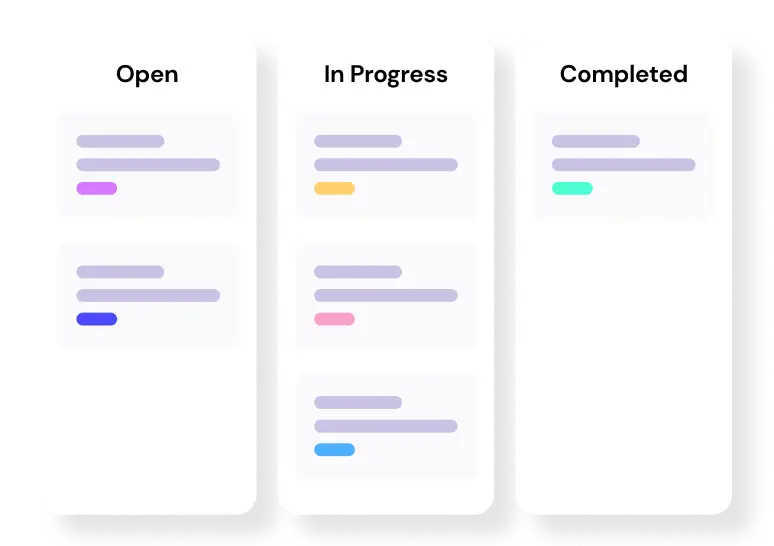
Level up your WordPress project management game with this Trello equivalent solution – where limitless possibilities come at an unbeatable price!
Project Management vs. Project Team Collaboration
Although, both project management and collaboration work together to serve a common purpose. However, they don’t mean the same thing.
Yes, they both complement each other, but there exist some differences.
| Aspects | Project Management | Project Team Collaboration |
| Definition | A process of planning, organizing, overseeing, and allocating resources to achieve project success. | A process of working together to complete tasks and achieve common goals. |
| Key focus | Project planning, execution, skill allocation, and delivery. | Effective communication, collaboration, and teamwork. |
| Leadership | Led by Project Managers | Led by Small Teams |
| Goals | Meeting project goals, timelines, and budgets. | Improving teamwork, communication, and collaboration. |
| Outcome measurement | Success is calculated based on delivery time, budget, and project completion. | Success is calculated solely on team performance and cross-functional team collaboration. |
| Challenges | Keeping the project on track, maintaining the budget, risk minimization, and quality assurance. | Conflicts resolution, and fostering a collaborative environment. |
| Approach | Broader: Involves entire project lifecycle | Narrower: Involves small teams and their collaborative task execution. |
Read this blog to understand the importance of project management
6 Key Things to Keep in Mind When Building a Project Team
Building a project team is more than just assigning tasks—it’s about bringing together the right people to achieve a common goal. Here’s how to do it effectively:
- Determine the project needs: Before picking your team, understand what the project involves. This will help you decide who needs to be part of the team.
- Choose the right people: Select team members whose skills align with the project requirements and desired project team structure. Assign clear, distinct roles to each member. A diverse, well-rounded team can pave the way to success!
- Ensure availability: Even the perfect team member can become a bottleneck if they’re overloaded. Make sure everyone has the time to commit.
- Understand work styles: People work differently, and these differences can affect team dynamics. Recognize and embrace these differences from the start.
- Create a team identity: Define what the team stands for and what you aim to achieve together. This helps in building a sense of purpose.
- Maintain adaptability: Keep an eye on how the team is performing and be ready to make adjustments if needed.
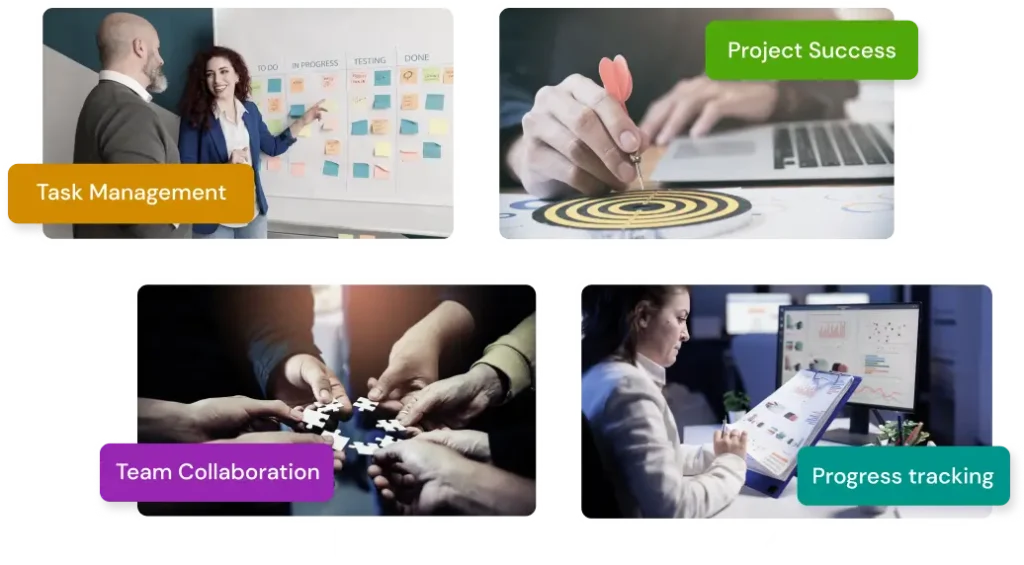
Every Project Collaboration Feature at Your Fingertips!
Why Project Team Collaboration is So Important?
Collaboration has always been a big part of whether it has been stated in terms of business, sports, education, or anything else.
For project management, collaboration goes hand-in-hand! Without effective collaboration in place, project managers face challenges!
And, the rise of remote work has made collaboration a massive part of maintaining the fluid flow of work. As a project manager or stakeholder – you might manage teams working from different locations.
Moreover, effective project team collaboration brings more benefits to organizations including:
- Faster Production
- Quality Outcome
- Clear Accountability
- Better Problem Solving
- Smoother Communication
- Increased Knowledge Sharing
Learn more about the benefits of collaboration
Revolutionize Your Project Team Collaboration
Every project and team is unique with diverse skill sets. For successful completion, the team needs to work in harmony.
So, whether you are leading a small team or a big one, fostering project team collaboration can significantly enhance your project’s success.
And, when you incorporate smart project management tools such as FluentBoards, it’ll help you organize your chaotic projects into neat, manageable workflows.
Let’s redefine project management with FluentBoards!
Get Tips, Tricks, & Updates
We won’t send you spam.













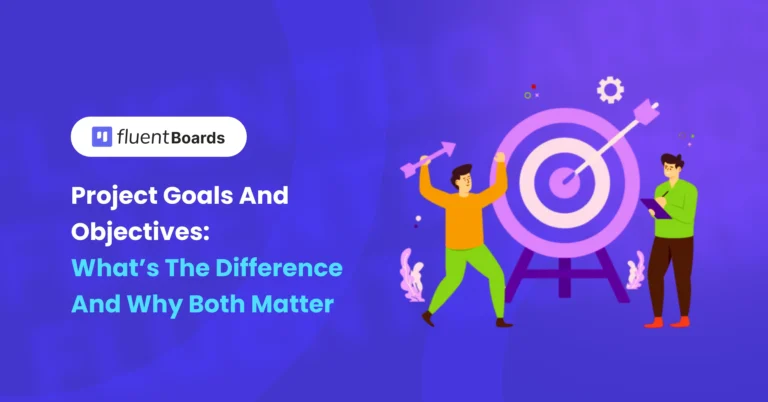
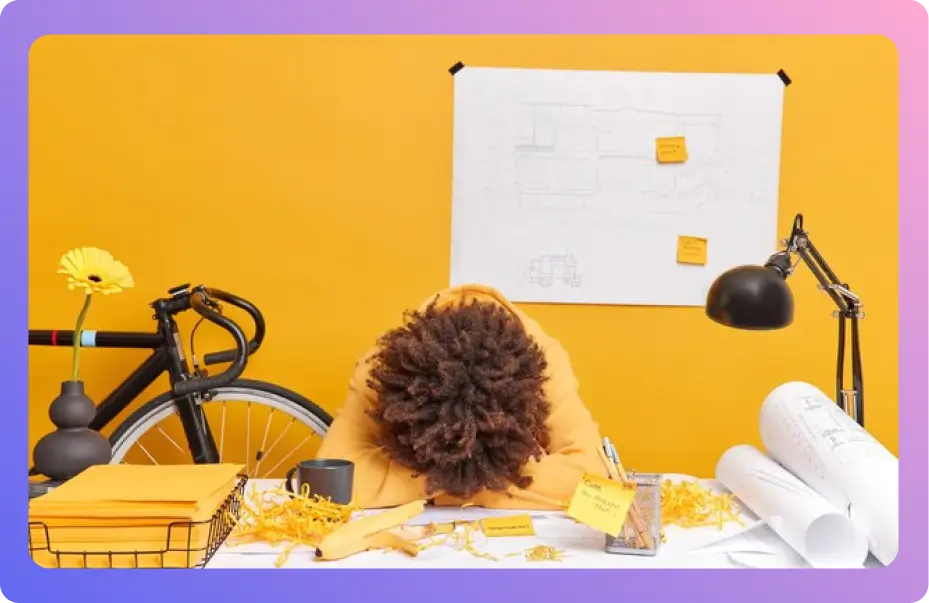
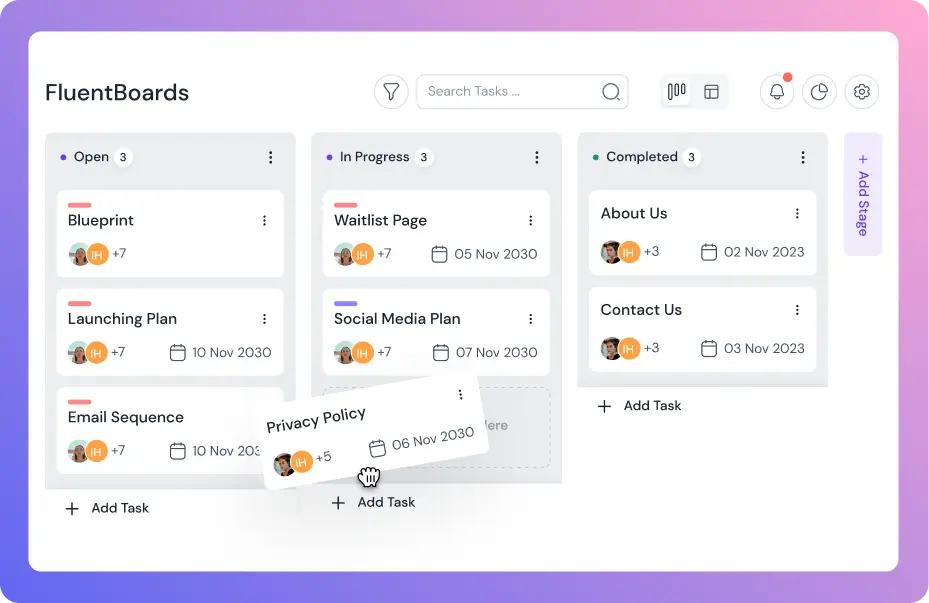
Leave a Reply